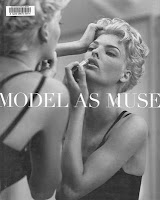The Dewey Decimal Classification System, Dewey for short, is the most commonly used way for public libraries to organize non-fiction books by subject. It was invented and copyrighted in 1876 by 21-year-old Melvil Dewey. In order to stay current with contemporary needs, it was designed with built-in methods for adding new subjects and revamping subject terms. The twenty-third edition was just published in 2011. Today every book copyrighted in the United States is assigned a standardized Dewey number by the Library of Congress. That means that the same title will be found in the same place in public libraries as far apart as San Francisco, Boston and Anchorage. For a technology invented by one individual 136 years ago it has held up surprisingly well. In some areas though, it’s beginning to show its age. The confusion over the three clothing classifications is a perfect example of how a concept that was entirely clear in Dewey’s Victorian era has caused some understandable mystification in our 21st century.
The 300’s section of the library represents “Social Sciences.” The 391 subsection is assigned to “Costume and Personal Appearance”. The word costume itself is the beginning of the confusion. In modern usage costume usually refers to a disguise, as in a Halloween costume. In Dewey’s time, and in the system today, the main definition is simply a style of dress, especially that specific to a time, group or historical period. In the 391s you’ll find titles like Women From the Ankle Down: The Story of Shoes and How They Define Us by Rachelle Bergstein (391.413) and Imperial Chinese Robes From the Forbidden City, edited by Ming Wilson with the Palace Museum, Beijing (391.0095). Falling into the personal appearance part of the 391s is 500 Tattoo Designs by Henry Ferguson (391.65)
The 600’s section comprises “Technology (Applied Science).”.You can imagine how much this section has changed since 1876. At the time Dewey was developed, the 640 division encompassed “Home Economics and Family Living,” and the 646.3 section narrowed this down to the home economics aspects of clothing and accessories. Placing clothing in Home Economics was logical in an era when one member of a large household, nearly always the wife and mother, managed the business of producing and maintaining a family’s wardrobe on a budget and in the home. To further put 646.3 in context, it is bracketed by 646.2 “Sewing and related operations” and 646.4 “Clothing and accessories construction”. Examples of titles to be found here include Lands’ End Business Attire for Men: Mastering the New ABCs of What to Wear to Work by Todd Lyon (646.32), Dress Like a Million Bucks Without Spending It! By Jo Ann Janssen (646.34), and What Not to Wear by Trinny Woodall and Susannah Constantine (646.34)
The 700’s class covers “Fine and Decorative Arts” and when narrowed down to the 746 section comprises “Textile Arts.” Squeezed into the end of this section you’ll find 746.92 “Costume and Fashion Design”. From a contemporary point-of-view, the Decorative Arts aspect of clothing is the easiest placement to understand, but this is quite a modern concept. The first true Haute Couture house was opened by Charles Frederick Worth in 1871. He was the first to put a label in his clothing. Was Melvil Dewey, just six years later, a visionary who observed Worth's accomplishments and predicted that clothing would move out of home economics and into the world of high style? Not exactly. Dewey did not include textile arts or fashion design anywhere in his original list of subjects. Somewhere in one of the later editions the guardians of Dewey realized that textile arts, including knitting, quilting and clothing design, could be considered as objects of artistic expression, and not just as household necessities. As attitudes changed the Dewey system periodically updated and added subjects in order to stay relevant. Look at 746.92 to find information on individual designers and others involved in the creative side of fashion design. Some books you will find here are Vivienne Westwood by Claire Wilcox (746.9209), Model as Muse by Harold Koda (746.9207), and Claire McCardell: Redefining Modernism by Kohle Yohannan and Nancy Nolf (746.9209).

This should help to clear up the logic behind having three different access points for what is essentially the same topic. Because the differences can be somewhat subjective, even seasoned catalogers at the Library of Congress occasionally make some dubious decisions about where to place certain titles. If you are not sure exactly what you want, start in the 391 section. It is by far the largest of the three. If you don’t find what you want where you expect to see it though, remember to check all three sections. Also remember to look at our online catalog because there are some important reference books in the closed stacks that you will not see by browsing the shelves. Staff at the page desk can pull these out for you. As always, if you can’t find what you want, or you aren’t sure what kind of information you need, please check with a reference librarian.





No comments:
Post a Comment